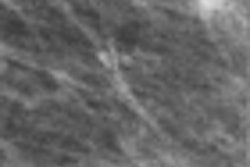
NEW YORK (Reuters Health), Aug 23 - Bioelectrical impedance analysis (BIA) is a practical way to measure body composition in hemodialysis patients, British researchers say.
Multifrequency BIA is not as accurate as the gold standard DEXA (dual-energy x-ray absorptiometry), and it can't be used in patients with amputations, pacemakers, or defibrillators, they point out. But it's far less expensive than DEXA, doesn't involve radiation, can be done in the dialysis center or at bedside, and is readily repeated.
"In our own institution DEXA scanning is limited to one examination per year, whereas we perform bioimpedance every few months or more frequently depending upon clinical circumstances," co-author Dr. Andrew Davenport told Reuters Health by e-mail.
Dr. Davenport, from University College London Medical School, and Dr. Antje Furstenberg, from Royal Free Hospital, London compared DEXA and multifrequency BIA in 53 stable adults receiving outpatient hemodialysis three times a week. The BIA equipment used a tetrapolar eight-point tactile electrode system to measure body composition.
As they reported online August 9 in the American Journal of Kidney Diseases, about half the patients were women, half were ethnic minorities, and roughly one quarter had type 2 diabetes. The patients ranged in age from 22 to 86 years; their body mass index ranged from 16 to 37 kg/m2. They'd been receiving dialysis for an average of six years (range, one month to 32 years).
Despite the heterogeneity of their subjects, the authors found a highly significant correlation between the two methods, both for the whole body and for individual segments (arms, legs, and trunk).
However, "we would not recommend bioimpedance to assess bone mineral content," because it systematically overestimated that parameter, Dr. Davenport said.
The authors stress that both techniques overestimate lean body mass in overhydrated patients, and so they should be done at a constant hydration status. In the current study, the authors obtained BIA measurements at 20 to 30 minutes after dialysis.
It's important to know these patients' body composition because increased fluid retention can mask a loss of lean body mass or fat weight, the researchers note.
"The key with any assessment of nutritional status is the ability to perform serial measurements over time," they conclude, adding, "The advantage of multifrequency BIA is that it can be readily repeated, and previous studies have confirmed the reliability and reproducibility of the technique for most hemodialysis patients."
By Karla Gale
Source: http://link.reuters.com/bep95n
Am J Kidney Dis 2010.
Last Updated: 2010-08-20 15:13:27 -0400 (Reuters Health)
Copyright © 2010 Reuters Limited. All rights reserved. Republication or redistribution of Reuters content, including by framing or similar means, is expressly prohibited without the prior written consent of Reuters. Reuters shall not be liable for any errors or delays in the content, or for any actions taken in reliance thereon. Reuters and the Reuters sphere logo are registered trademarks and trademarks of the Reuters group of companies around the world.

















